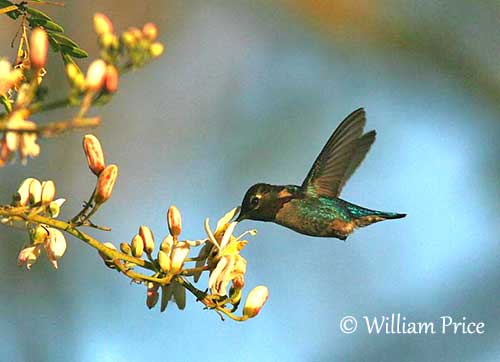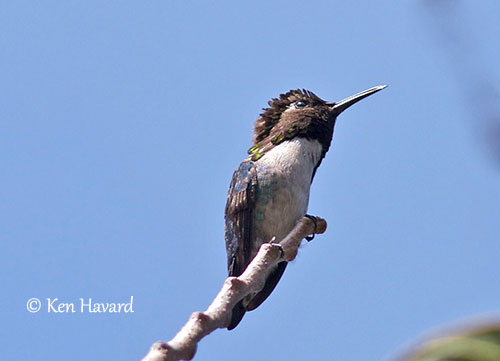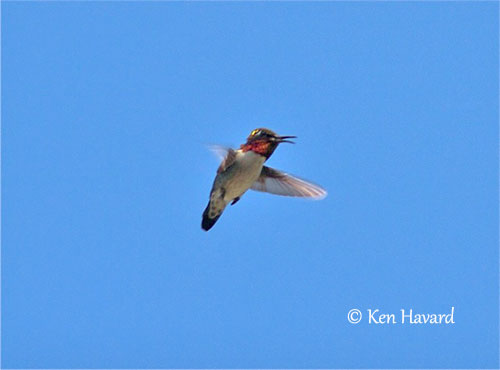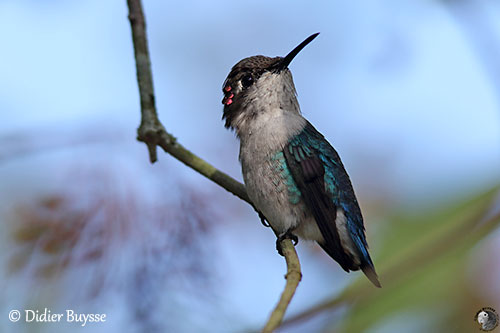Fr: Colibri d’Elena
Ang: Bee Hummingbird
All: Bienenelfe
Esp: Colibrí Zunzuncito
Ita: Colibrì ape
Nd: Bijkolibrie
Sd: Bikolibri
Photographers:
Didier Buysse
Vision d’Oiseaux
Ken Havard
My Bird Gallery & Flickr gallery 1 & Flickr gallery 2
William Price
PBase-tereksandpiper & Flickr William Price
Text by Nicole Bouglouan
Sources:
HANDBOOK OF THE BIRDS OF THE WORLD Vol 5 by Josep del Hoyo-Andrew Elliott-Jordi Sargatal - Lynx Edicions - ISBN: 8487334253
BIRDS OF THE WEST INDIES – by Herbert Raffaele, Kristin Williams et Tracy Pedersen – Helm – ISBN: 9780713649055
Animal Diversity Web (University of Michigan Museum of Zoology)
Neotropical Birds – Cornell Lab of Ornithology
FactZoo.com - Bee Hummingbird - Smallest Bird in the World
Bee Hummingbird (Mellisuga helenae)
Bee Hummingbird
Mellisuga helenae
Apodiformes Order – Trochilidae Family
INTRODUCTION:
The Bee Hummingbird is part of the subfamily Trochilinae in the large family Trochilidae. It is the smallest hummingbird with a weight of less than 2 grams, and probably the smallest bird of the world. It is comparable in size to large bees. This species is only found in Cuba and nearby islands, and is endemic to Cuban Archipelago.
Despite its small size, it is a strong flier and is able to beat its wings around 80 times/second in 8-shaped pattern while feeding on nectar from flowers.
Like numerous species, it is threatened by habitat loss for agriculture expansion that reduces the natural plant species from which it gets the nectar.
The population of the Bee Hummingbird is slowly declining and the species is classified as Near Threatened.
The non-breeding male has blue spots on the wingtips and black tips to rectrices, in order to differentiate male from female.
The slightly larger female has iridescent green upperparts and head (crown and nape). The underparts are whitish and the rounded tail shows white-tipped outer rectrices.
On the head, the lores are blackish whereas face and ear-coverts are whitish. We can see an indistinct white spot behind the eye.
The juvenile resembles female.
RANGE:
The Bee Hummingbird is endemic to Cuban Archipelago and also occurs on Isle of Pines (Isle of Youth).
HABITAT:
The Bee Hummingbird may live at both high and low elevation, but it prefers lowlands. It frequents mainly coastal forests and forest edges, but it is also found in inland forest, swampland, mountain valleys and gardens. It usually requires mature forests with dense vegetation such as epiphytes and tangles of lianas. It needs areas with Solandra grandiflora which is its preferred source of nectar.

The Bee Hummingbird performs courtship displays at the beginning of the breeding season. During the flight display, the male’s wings may beat up to 200 times/second.
Males form leks from where they sing to attract females. They are polygynous and a single male may mate with several females during one breeding season.
The aerial displays show the male flying straight up into the air and descending abruptly. Mating may occur on a perch or while hovering in the air.
The Bee Hummingbird male establishes and defends its feeding areas. It chases other males but also large insects such as bumblebees and hawk-moths that come to feed within the territory. It performs aerial displays and intimidation displays in territory defence.
The Bee Hummingbird is sedentary with only short movements to the nearby islands.
In flight, it makes a peculiar buzzy noise, similar to a bumblebee.
The female lays 2 pea-sized white eggs. She incubates alone during 21-22 days. At hatching, the chicks are naked and hatch one day apart. All the nesting duties are performed by the female alone. She feeds and broods the chicks that fledge about 18 days after hatching.
PROTECTION / THREATS / STATUS:
The Bee Hummingbird has small declining population due to modification and destruction of its habitat for agriculture expansion.
Formerly present throughout Cuba and Isle of Pines, it is now surviving only at a few locations where it is restricted to forested areas.
The Bee Hummingbird is currently classified as Near Threatened.
DESCRIPTION OF THE BIRD:
Biometrics:
Male:
Length: 5,50 cm
Wingspan: 3,25 cm
Weight: 1,95 g
Female:
Length: 6,12 cm
Weight: 2,6 g
The adult male has iridescent red head and throat, but this colour may appear very different depending on the light. During the breeding season, the elongated lateral plumes of the throat extend to the neck sides. Eye’s area and ear-coverts are greyish and extend down to the side of the head.
The upperparts are iridescent blue and green. Flight feathers and rectrices are dark.
Rest of underpart is greyish-white, with blue and green upper flanks.
The straight bill is blackish. The eyes are dark brown with black lores. Legs and feet are black


CALLS AND SONGS: SOUNDS BY XENO-CANTO
The Bee Hummingbird utters high-pitched “tsit” calls while feeding. The song is a variety of vocal sounds including a long, quite high twitter and long warbling notes. The song is often a single repeated note.
During displays, the male gives a series of high-pitched, buzzy, scratching notes while chasing the female.
BEHAVIOUR IN THE WILD:
The Bee Hummingbird feeds on nectar from numerous flowers, thanks to its long, protractile tongue. It also takes insects and spiders found within the corollas. It feeds like all hummingbirds by hovering in front of the flower. It tends to feed mostly at horizontal flowers. The bird acts as pollinator.
